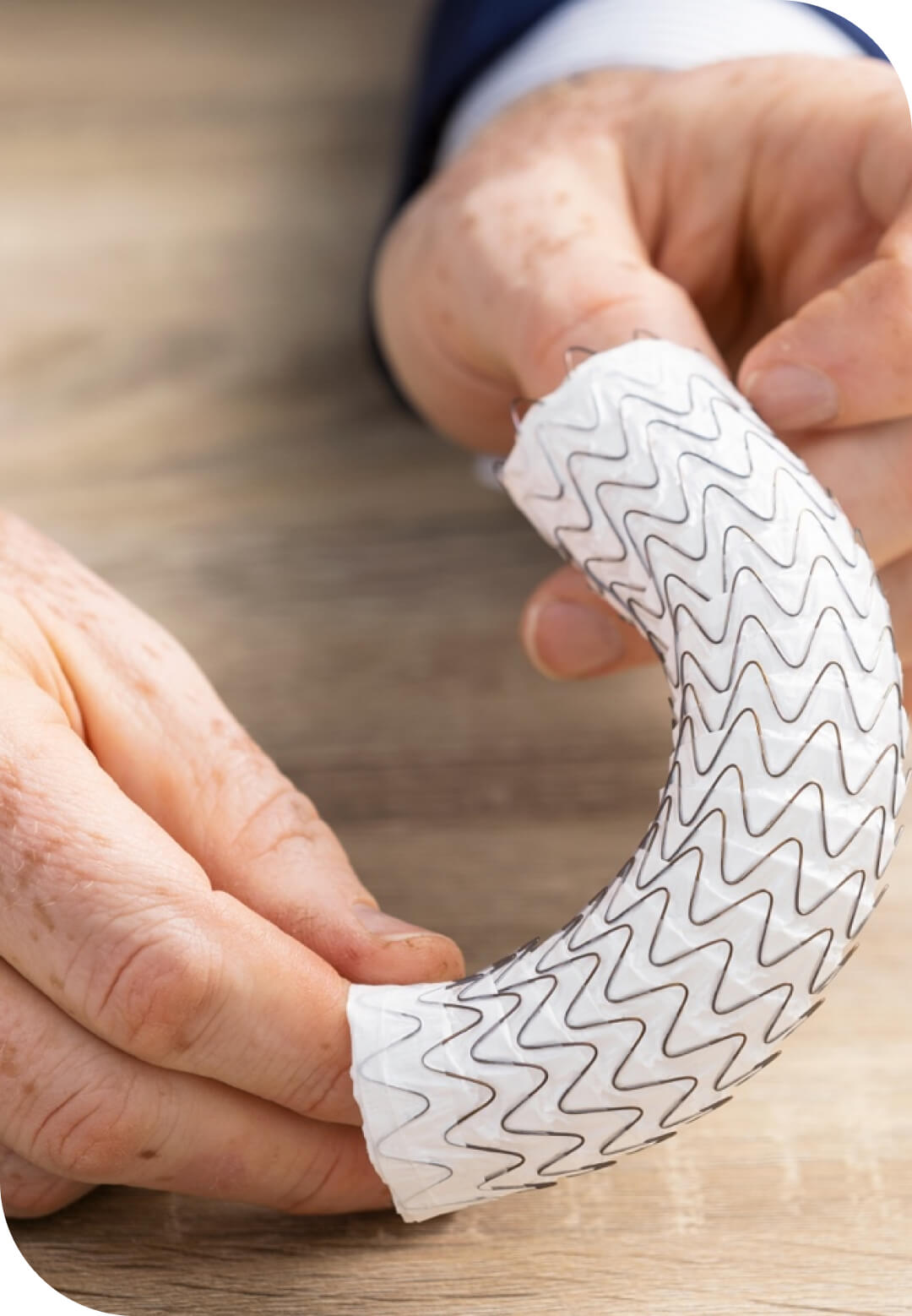
Menu
close

Menu
close
Aortic Aneurysm is a condition resulting in swelling of the main blood vessel (Aorta) and can affect the Abdominal Aorta (AAA) or Thoracic Aorta (TAA) in the chest. Aortic Aneurysm can affect up to 8% of the population over time, with men affected more than women. It can also run in families. If an aneurysm becomes large there is a risk that it can rupture posing a life-threatening emergency.


The majority of Aneurysms detected never require intervention, however there are medications that can be helpful and surveillance of the Aortic Aneurysm is important.
There are a range of minimally invasive Endovascular treatments available for aortic aneurysms depending on the location of the aneurysm and certain factors such as the position to other blood vessels like the renal arteries. The placement of a stent can help seal the aneurysm and prevent rupture of the aneurysm.
In some patients the best and most durable treatment option will be an open operation and replacement of the Aneurysm with a specialist graft to prevent the aneurysm rupture. This treatment option is longstanding and provides a good solution for the patients requiring it.
Good nutrition may reduce the risk of aneurysm rupture. For patients who don't require surgery, good nutrition can assist in reducing inflammation and management of high blood pressure. For patients who require surgery, good nutrition before and after surgery can improve recovery time.


The majority of patients with Aortic Aneurysms do not have any symptoms and the Aortic Aneurysm is most commonly found when having investigations for other complaints. If you have new severe back pain or abdominal pain and are concerned then you should seek urgent care and be assessed.
The majority of patients with Aortic Aneurysms require only surveillance initially. When an Aneurysm is larger than 5.5cm treatment with endovascular stent or surgery is considered. If your Aortic Aneurysm is larger than 6.5cm then you should seek an urgent review with the team at AVC.
If you have a family member with an Aortic Aneurysm then there may be an increased risk of you having an Aneurysm yourself. You should discuss this with your GP and consider whether you require an ultrasound scan to check your own Aorta



